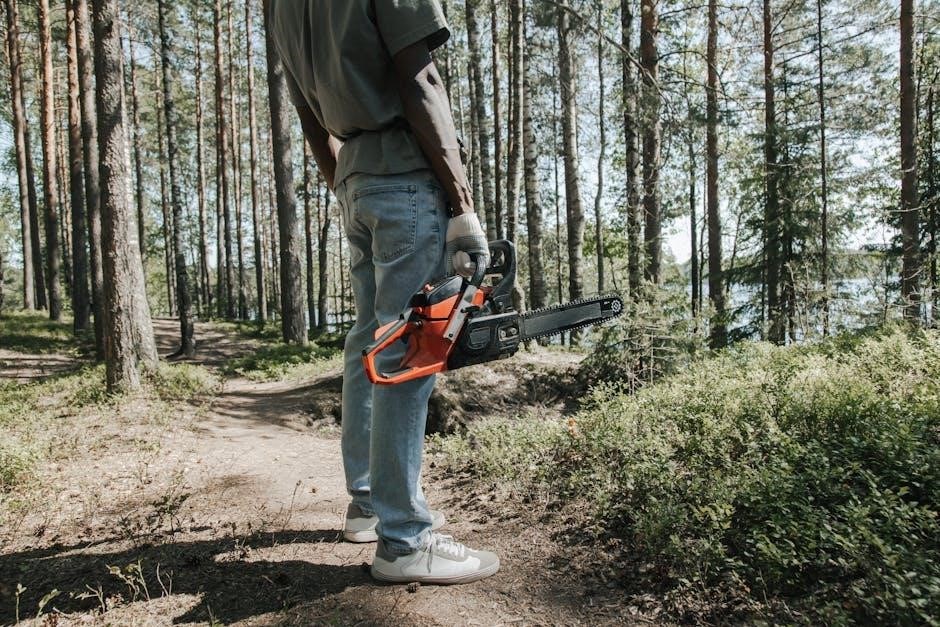A manual transmission stuck in gear can disrupt driving and safety. Understanding its causes‚ such as low fluid or damaged components‚ is crucial for a proper fix.
Overview of Manual Transmission Stuck in Gear Issue
A manual transmission stuck in gear is a common issue that can occur due to various factors. It often results in difficulty shifting gears or the gear refusing to disengage. This problem can stem from low or contaminated transmission fluid‚ which lacks proper lubrication‚ or damaged components like gear teeth or synchronizer rings. Faulty shifter components or clutch malfunctions can also contribute. If left unaddressed‚ it may lead to severe internal damage‚ making repairs more complex. Understanding the root cause is essential for effective troubleshooting and restoration of smooth gear operation.
Common Causes of a Manual Transmission Stuck in Gear
Low or contaminated fluid‚ damaged gear teeth‚ faulty shifter components‚ and clutch malfunctions are primary causes of a manual transmission getting stuck in gear.
Low or Contaminated Transmission Fluid
Low transmission fluid levels or contaminated fluid can cause gears to stick. Fluid lubricates gears and prevents overheating. Insufficient or dirty fluid leads to friction‚ wear‚ and gear binding. Regular checks and flushes are essential to maintain proper lubrication and prevent damage. If fluid levels are low‚ adding the correct type is crucial. Contaminated fluid should be replaced to ensure smooth gear engagement and avoid costly repairs. This is a common yet preventable issue in manual transmissions.
Damaged Gear Teeth or Synchronizer Rings
Damaged gear teeth or worn-out synchronizer rings can cause gears to stick or fail to engage properly. Gear teeth are essential for meshing gears‚ while synchronizer rings ensure smooth shifting by equalizing speed between gears. If these components are damaged‚ gears may not align correctly‚ leading to difficulty shifting or gears staying stuck. Grinding noises during shifts often indicate such damage. Addressing these issues promptly is crucial‚ as prolonged use can worsen damage‚ potentially requiring costly repairs or even transmission replacement.
Faulty Shifter Components or Linkage
Faulty shifter components or linkage can prevent smooth gear transitions. Worn bushings‚ loose connections‚ or damaged shift forks may cause gears to stick or misalign. If the linkage is misaligned or corroded‚ it can restrict proper gear engagement‚ leading to gears staying in place. Regular inspection of these parts is essential to maintain smooth shifting. Replacing worn components promptly can prevent further damage and ensure reliable transmission performance‚ avoiding costly repairs down the line.
Clutch System Malfunction
A malfunctioning clutch system can prevent proper gear engagement‚ causing the transmission to stay in gear. If the clutch fails to disengage fully‚ it may keep power applied to the gears‚ making shifting difficult. Worn clutch plates or a faulty master/slave cylinder can disrupt the hydraulic system‚ leading to incomplete disengagement. This results in gears not releasing properly‚ which can cause the transmission to feel stuck. Addressing clutch issues promptly is crucial to avoid further damage to the transmission and ensure smooth operation.

Troubleshooting Steps for a Stuck Manual Transmission
Start by checking transmission fluid levels and condition‚ then inspect shifter linkages and bushings for wear or damage. These steps help identify common issues quickly and effectively.
Checking Transmission Fluid Levels and Condition
Low or contaminated transmission fluid is a common cause of gears sticking; Always begin by checking the fluid level using the dipstick. If the fluid is dirty or below the minimum mark‚ it may fail to lubricate components properly‚ leading to stuck gears. Clean or replace the fluid as needed and ensure the correct type is used for your vehicle. Regular fluid checks can prevent future issues and maintain smooth gear operation. Addressing this step early can save time and avoid more severe damage.
Inspecting the Shifter Linkage and Bushings
Inspecting the shifter linkage and bushings is essential to identify mechanical issues causing the gear to stick. Raise the vehicle to access the underside and examine the linkage for damage or wear. Worn or broken bushings can prevent smooth shifting‚ while loose or damaged shifter arms may misalign gears. Clean or replace any faulty components to restore proper shifting functionality. Addressing these issues early can prevent further damage and ensure reliable gear engagement. Regular inspections of these parts are key to maintaining transmission health.
DIY Fixes for a Manual Transmission Stuck in Gear
Addressing a stuck manual transmission can often be resolved with simple DIY fixes. Adjusting or replacing the shifter linkage and bushings can restore proper gear engagement. Replacing worn synchronizer rings or damaged gear teeth may also resolve the issue. Regular lubrication of components and ensuring proper clutch function are essential steps to prevent future problems. These fixes can save time and money before seeking professional assistance.
Adjusting or Replacing the Shifter
Adjusting or replacing the shifter is a common DIY fix for a manual transmission stuck in gear. Start by inspecting the shifter linkage and bushings for wear or damage. If loose‚ tighten the mounting bolts or replace worn bushings to ensure proper alignment. In some cases‚ the shifter may need adjustment to align with the gear selector. If the shifter is damaged beyond repair‚ replacing it with a new or refurbished unit can restore smooth shifting. This step is cost-effective and can prevent further complications.
Replacing Worn or Damaged Components
Replacing worn or damaged components is essential for resolving a manual transmission stuck in gear. Inspect gear teeth‚ synchronizer rings‚ and bearings for wear or damage. Worn clutch plates or a faulty master cylinder can also cause shifting issues. Replacing these parts ensures proper engagement and disengagement of gears. Additionally‚ damaged shifter arms or misaligned linkages should be repaired or replaced to restore smooth operation. Regularly replacing worn components can prevent the transmission from getting stuck and maintain optimal performance over time.

Preventive Maintenance to Avoid Gear Sticking
Regular lubrication of gears and components ensures smooth operation. Schedule periodic inspections of the clutch‚ fluid levels‚ and linkages to prevent sticking and maintain optimal performance.
Regular Lubrication of Transmission Components
Regular lubrication is essential for maintaining smooth gear operation. Transmission fluid or gear oil reduces friction between moving parts‚ preventing wear and tear. Insufficient or contaminated fluid can lead to stuck gears. Always check fluid levels and condition‚ topping up as needed. Use the correct type of fluid for your vehicle to ensure optimal performance. Regular fluid changes and component lubrication can prevent sticking issues and extend the lifespan of your manual transmission. This proactive approach helps maintain smooth shifting and overall system durability.
Scheduling Periodic Inspections
Periodic inspections are vital for preventing gear-sticking issues in manual transmissions. Regular checks of the shifter linkage‚ bushings‚ and fluid levels can identify potential problems early. Inspecting the clutch system and synchronizer rings ensures proper engagement and smooth shifting. Schedule inspections every 30‚000 to 60‚000 miles‚ or as recommended by your vehicle’s manufacturer. A professional mechanic can detect early signs of wear or damage‚ addressing them before they lead to gears becoming stuck. Consistent maintenance significantly reduces the risk of transmission issues and ensures optimal performance over time.

When to Seek Professional Help
Seek professional help if you notice severe internal damage‚ persistent issues after DIY repairs‚ or signs like grinding noises‚ slippage‚ or a burning smell from the transmission.
Signs of Severe Internal Damage
Signs of severe internal damage include grinding noises during shifts‚ difficulty engaging gears‚ and a burning smell from the transmission. These indicate worn or damaged components like gear teeth or synchronizer rings. If left unaddressed‚ such issues can lead to complete transmission failure‚ requiring costly repairs or replacement. Professional inspection is essential to assess the extent of damage and prevent further deterioration. Ignoring these symptoms can result in more severe and expensive problems down the road.
Persistent Issues After DIY Repairs
If a manual transmission remains stuck in gear after attempting DIY fixes‚ it signals that deeper issues may exist. Persistent problems like difficulty shifting or unusual noises indicate that underlying damage wasn’t fully addressed. This could involve internal components like the clutch system‚ synchronizer rings‚ or gear teeth. In such cases‚ professional intervention is necessary to diagnose and repair complex issues that DIY methods can’t resolve. Continuing to drive with unresolved transmission problems can lead to further damage and higher repair costs.
Final Thoughts on Addressing a Stuck Manual Transmission
A stuck manual transmission requires prompt attention to prevent further damage. Regular maintenance‚ fluid checks‚ and timely repairs can ensure smooth operation and extend its lifespan.
A stuck manual transmission is a serious issue that requires immediate attention to prevent further damage. Regular maintenance‚ such as checking transmission fluid levels and inspecting components‚ can help avoid this problem. If the issue arises‚ troubleshooting steps like adjusting the shifter or replacing worn parts can often resolve it. However‚ severe cases may necessitate professional intervention. Addressing the problem promptly ensures smooth operation and extends the lifespan of your transmission‚ saving time and money in the long run. Proactive care is key to maintaining optimal performance.

References
Key sources include automotive repair guides‚ manufacturer manuals‚ and online forums discussing transmission issues and fixes‚ offering insights for further reading.
Key Sources for Further Reading
For deeper insights‚ consult reputable automotive repair websites like Repairious.com‚ which offers detailed guides on diagnosing and fixing stuck gears. Manufacturer service manuals provide specific instructions tailored to your vehicle. Additionally‚ forums and communities dedicated to car maintenance‚ such as those focused on manual transmissions‚ share real-world experiences and solutions. These resources collectively offer comprehensive guidance for addressing and preventing gear-sticking issues in manual transmissions.




About the author